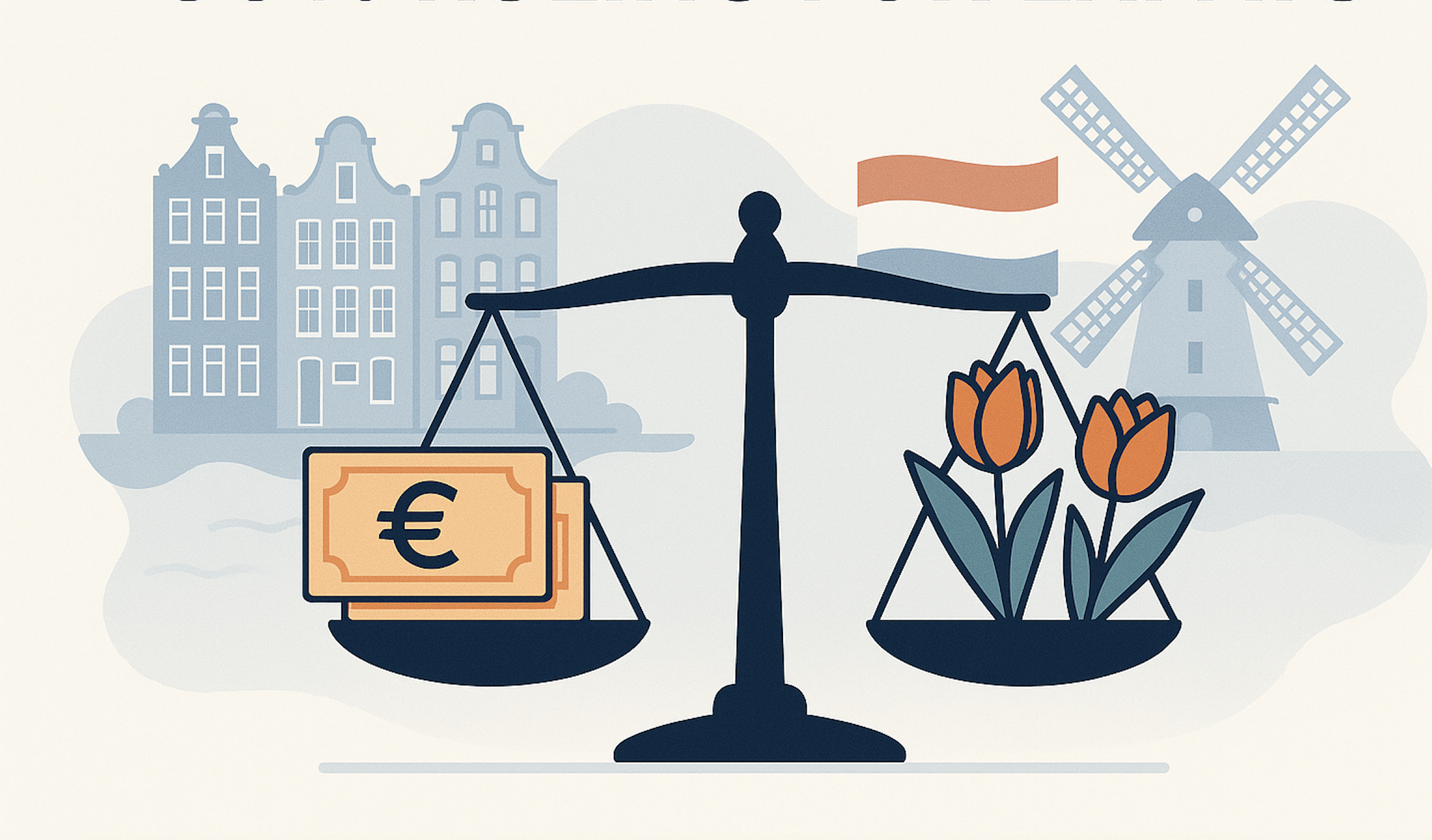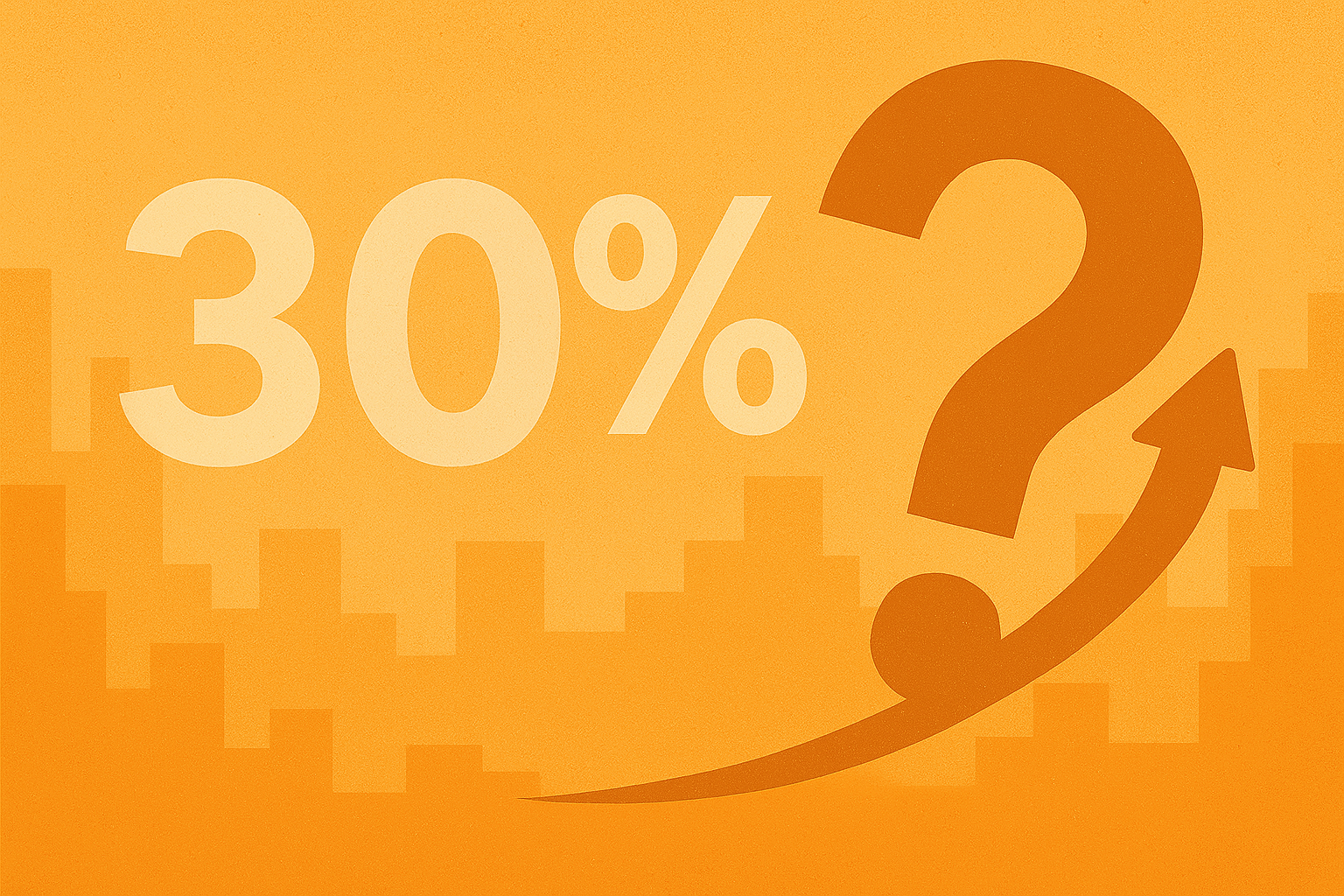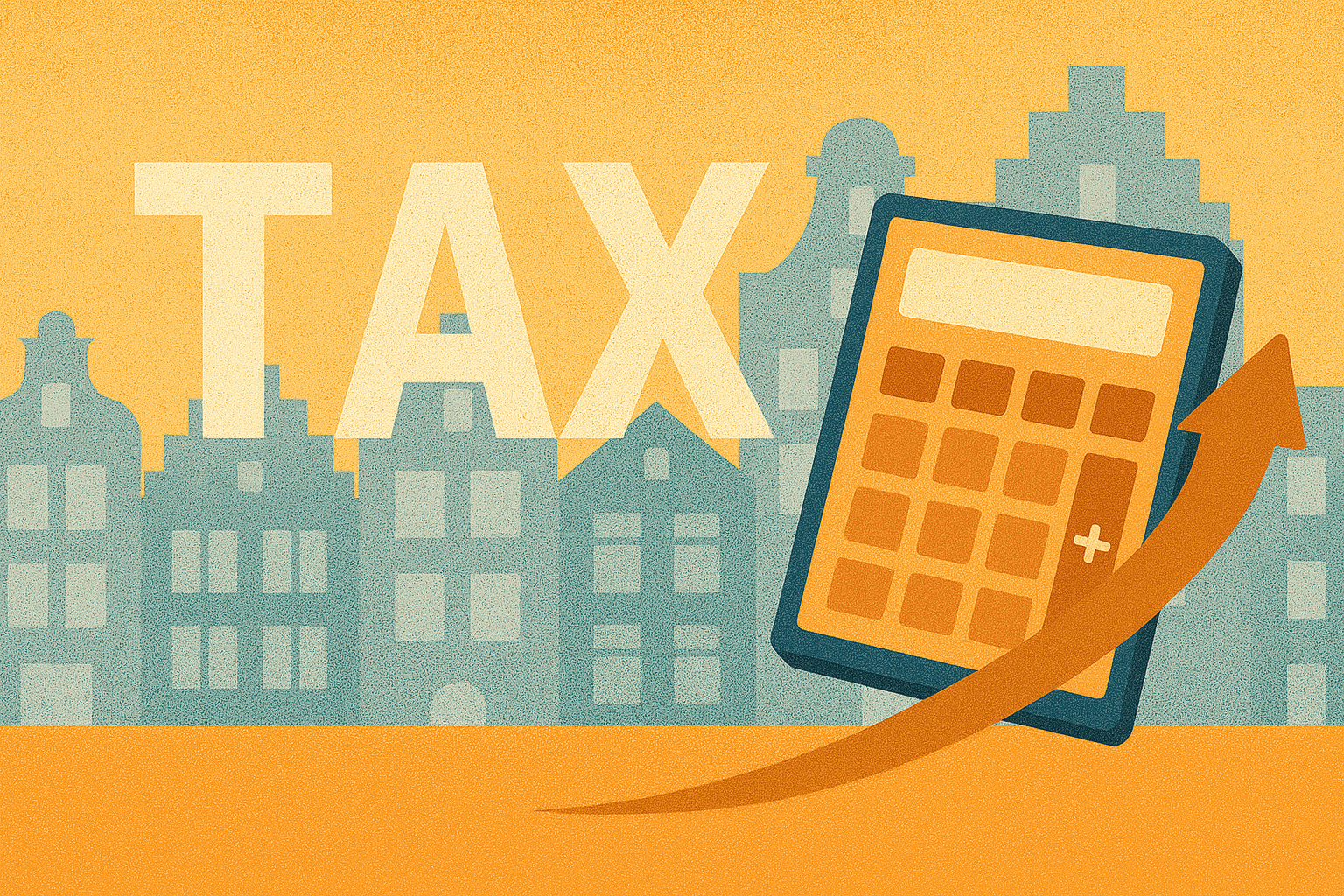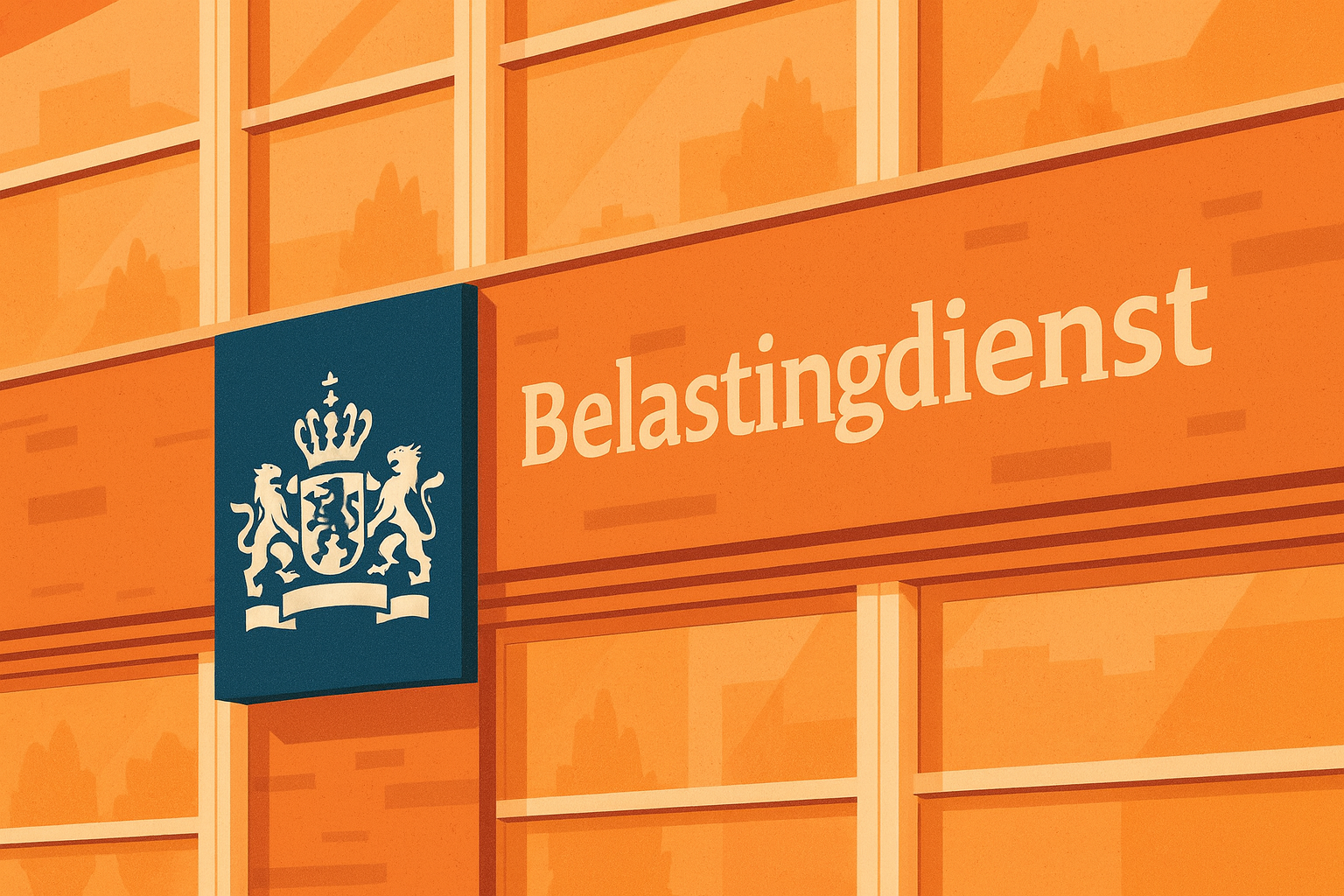· Tax · 17 min read
The Netherlands 30% Ruling 2025: Major Changes You Need to Know
The Netherlands 30% Ruling continues with a flat 30% benefit for 2025, though Box 3 exemption has been abolished for new applicants. Here's what expats need to know about the current rules.

The Netherlands 30% Ruling 2025: Major Changes You Need to Know
“The 30% ruling remains an attractive tax benefit for expats in the Netherlands. While the benefit structure itself stays the same (30% flat rate), changes to Box 3 exemption and salary caps affect its overall value. Understanding these changes is crucial for making informed financial decisions.”
⚠️ Executive Summary: Key Information for 2025
The 30% ruling continues to provide a valuable tax benefit for expats, maintaining its flat 30% rate through 2026. However, some peripheral changes affect its overall value:
Key Facts for 2025:
✅ Benefit Remains Flat: The ruling maintains a flat 30% tax-free allowance for the full 5-year period (reducing to 27% for new applicants from 2027 onwards).
💰 Salary Cap: High earners face a maximum salary cap (€233,000 indexed for 2025) above which the benefit doesn’t apply.
❌ Box 3 Exemption Abolished: The valuable exemption from wealth tax on savings and investments ended January 1, 2025, for new applicants.
Bottom Line: The core 30% tax benefit remains intact and generous, but wealth tax obligations and salary caps reduce the overall package value for high-income expats.
The Netherlands 30% Ruling is a tax advantage available to highly skilled expatriates working in the country. However, recent reforms have substantially changed how this benefit works, making it less attractive than in previous years while adding complexity to financial planning.
What is the Netherlands 30% Ruling?
The 30% Ruling is a Dutch tax facility designed to attract highly skilled foreign workers to the Netherlands. It compensates for the additional costs that expats face when working abroad, such as higher living expenses, language courses, and travel costs to visit family in their home country.
How It Works in 2025: The ruling provides a flat tax-free allowance on a portion of your gross salary:
- All 60 months: 30% of your salary is tax-free (you pay taxes on 70%)
- Future change: New applicants from 2027 will receive 27% instead of 30%
Important: For salaries above approximately €233,000 (indexed annually), the tax-free allowance cannot be applied to the excess amount.
Key Benefits at a Glance (2025 Update)
- Tax-free allowance: Flat 30% for all 5 years (27% for new applicants from 2027)
- Duration: Maximum of 5 years (60 months total)
- Driving license exchange: No test required for foreign licenses ✅ Still available
Box 3 exemption: ❌ Abolished January 1, 2025 for new applicants- Pension considerations: Building pension rights on tax-free portion ✅ Still available
- Salary cap: Maximum salary base of €233,000 (indexed annually)
Duration of Tax Benefit
Important Update: The 30% facility may be used for only 5 years maximum.
The Dutch government reduced the length of the 30% facility from 8 years to 5 years in 2019. This change affects all new applications and some existing rulings. The reduction was implemented to align with European Union guidelines and to make the benefit more sustainable for the Dutch economy.
Transitional Arrangements
2019 Duration Change: If you were already using the 30% ruling before January 1, 2019, you may be eligible for transitional arrangements. However, most new applicants will be limited to the 5-year maximum period.
2025 Box 3 Exemption Changes:
- Existing Ruling Holders (pre-2024): May maintain Box 3 exemption through 2025-2026 under transitional rules
- New Applicants (2024+): No Box 3 exemption from January 1, 2025
- Core Benefit: The 30% tax allowance remains flat at 30% for all new applicants through 2026
Important: Transitional arrangements are complex and vary by individual circumstances. Consult a qualified Dutch tax advisor to understand your specific situation.
Advantages of the Netherlands 30% Ruling
1. Significant Tax Savings (Flat Rate)
The primary advantage is the consistent reduction in your tax burden through a flat 30% tax-free allowance.
Example Calculation for €80,000 Salary (2025 Rules):
All 60 months (30% allowance):
- €80,000 salary → €56,000 taxable income
- Annual savings: ~€7,000-€9,000
- Consistent benefit throughout full 5-year period
Total 5-year savings: Approximately €35,000-€45,000 with consistent income advantage
2. Higher Net Income (Consistent Over Time)
The increased net income provides a stable improvement to your standard of living throughout the 5-year period:
Benefits:
- Save for future goals with predictable income
- Invest in property with stable financial planning
- Maintain financial commitments in your home country
- Enjoy higher quality of life consistently
Planning Consideration: Plan for the end of the 5-year benefit period when your net income will drop by approximately 8-12%.
3. Driving License Exchange Privilege
One of the most practical benefits is the ability to exchange your foreign driver’s license for a Dutch one without taking a driving test, regardless of where your original license was issued.
What this means:
- No need to retake driving lessons
- No practical or theoretical driving tests
- Immediate access to Dutch roads
- Recognition of your driving experience
4. Box 3 Tax Exemption (❌ ABOLISHED for 2025)
CRITICAL UPDATE: This benefit has been abolished effective January 1, 2025, for new applicants.
What Changed:
- Before 2025: 30% ruling holders were exempt from Box 3 wealth tax on savings and investments
- From 2025: New 30% ruling holders are considered “domestic taxpayers” and must pay Dutch wealth tax on their worldwide assets above €59,500 (2025 threshold)
Who’s Affected:
- ❌ New applicants (2024+): No Box 3 exemption from January 1, 2025
- ⚠️ Existing holders: May have transitional arrangements through 2025-2026 (consult a tax advisor)
Financial Impact: This change can cost thousands of euros annually in additional taxes, reducing the overall value of the 30% ruling package for wealthy expats.
5. Partner Benefits (Updated for 2025)
While your partner cannot directly benefit from the 30% ruling on their income, they can benefit from:
Box 3 tax exemptions on shared savings❌ Abolished for 2025- Driving license exchange privileges ✅ Still available
- Indirect financial benefits through stable household income ✅ Still available
Important: The loss of Box 3 exemption affects both you and your partner’s shared assets, but the core 30% tax benefit remains strong for the primary applicant.
Eligibility Criteria for the Netherlands 30% Ruling
Salary Requirements (as of January 1, 2025)
The minimum salary thresholds are indexed annually and strictly enforced:
| Age Group | Minimum Annual Salary (2025) |
|---|---|
| 30 years or older | €46,660+ (taxable income) |
| Younger than 30 with Master’s degree | €35,468+ (taxable income) |
Note: These figures are indexed annually for inflation and represent taxable income thresholds. When including the 30% tax-free allowance, gross salary requirements are approximately 43% higher.
Additional Requirements
To qualify for the 30% ruling, you must meet ALL of the following criteria:
Employment Status: You must be an employee recruited from abroad or transferred to the Netherlands by your employer.
Specific Expertise: You must possess specific expertise or skills that are scarce in the Dutch labor market.
Distance Requirement: You must have lived more than 150 kilometers from the Dutch border for at least 16 months out of the 24 months prior to your first day of work in the Netherlands.
Application Process: The ruling is not granted automatically - your employer must apply on your behalf.
Administrative Compliance: Your employer must meet certain administrative requirements and maintain proper documentation.
Salary Cap (From 2024): The 30% tax-free allowance can only be applied to a maximum salary base of €233,000 (2025, indexed annually). Any salary above this cap is taxed normally without the benefit.
How to Apply for the Netherlands 30% Ruling
Application Process
Employer Application: Your employer must submit the application to the Dutch Tax Office (Belastingdienst) on your behalf.
Required Documentation:
- Employment contract
- Proof of recruitment from abroad
- Evidence of specific expertise
- Documentation of residence outside the Netherlands
- Salary verification
Timeline: Applications typically take 2-3 months for processing and decision.
Retroactive Application: You can apply up to 4 months after starting work, with benefits retroactive to your first day of employment.
Important Considerations
- No Automatic Approval: Each application is individually assessed
- Employer Responsibility: Your employer must handle the application process
- Documentation Requirements: Comprehensive supporting documents are essential
- Professional Advice: Consider consulting with a tax advisor for complex cases
Pension Implications
Post-2015 Changes
After January 1, 2015, you do build up pension rights on the tax-free portion of your salary. This represents a significant change from the previous system.
What this means:
- Your pension contributions are calculated on your full salary
- You’ll have higher pension benefits than if the ruling didn’t exist
- This partially offsets the reduction in duration from 8 to 5 years
Application Rejection and Appeals
Common Reasons for Rejection
Your application for the 30% ruling might be rejected for several reasons:
- Insufficient Salary: Not meeting the minimum income requirements
- Inadequate Documentation: Missing or insufficient supporting documents
- Residence Requirements: Not meeting the 150km distance requirement
- Expertise Assessment: Skills not considered scarce in the Dutch market
- Application Errors: Incorrect or incomplete application forms
Appeal Process
If your application is rejected, you have the right to file a letter of objection:
- Timeline: 6 weeks for revision
- Required Elements: Clear reasoning and additional documentation
- Professional Support: Consider engaging a tax specialist for appeals
- Alternative Options: Explore partial ruling possibilities
Partial Ruling Possibilities
If you don’t meet the full requirements, you might qualify for a partial ruling:
- Reduced Percentage: Less than 30% tax-free allowance
- Limited Duration: Shorter benefit period
- Conditional Approval: Benefits with specific conditions
Changing Employers
Same Company Transfers
If you’re changing jobs within the same company and still qualify for the 30% facility:
- No Reapplication Required: Your current ruling remains valid
- Verification Needed: Confirm both employers belong to the same company
- Documentation Update: Update your employment details with the tax office
New Employer Outside Current Company
When moving to a new employer outside your current company:
- Timeline Requirement: Start new job within 3 months of leaving previous position
- Application Deadline: Apply within 4 months of starting new employment
- Benefit Continuity: Benefits start from your first day of work
- Documentation Transfer: Provide previous ruling documentation
Disadvantages and Considerations (Updated for 2025)
1. Multiple Income Drops (Staggered Impact)
MAJOR CHANGE: Instead of one income shock after 5 years, you now face three separate income reductions:
Income Drop Timeline:
- Month 20: First drop (30% → 20% benefit)
- Month 40: Second drop (20% → 10% benefit)
- Month 60: Final drop (10% → 0% benefit)
Financial Impact:
- First drop: Net income decreases by ~€2,000-€3,000 annually
- Second drop: Net income decreases by another ~€2,500-€3,500 annually
- Final drop: Net income decreases by final ~€2,000-€3,000 annually
Planning Challenge: You must now plan for multiple lifestyle adjustments rather than one major change, making budgeting more complex.
2. Limited Salary Negotiation
It’s rarely possible to negotiate a salary increase to compensate for the loss of the 30% ruling:
- Market Constraints: Dutch salary levels are generally lower than some countries
- Company Policies: Many companies have fixed salary structures
- Economic Factors: Market conditions may not support significant increases
3. Administrative Requirements
The 2025 ruling involves standard administrative requirements:
- Documentation Maintenance: Keep records for potential audits
- Compliance Monitoring: Ensure continued eligibility throughout ruling period
- Tax Return Changes: Include Box 3 wealth tax reporting on worldwide assets
- Box 3 Wealth Tax: New requirement to report and pay tax on worldwide assets above €59,500
- Benefit Tracking: Simple tracking of consistent 30% benefit
4. Dependency on Employer
Your continued eligibility depends on your employer:
- Application Management: Employer must maintain proper documentation
- Compliance Monitoring: Employer must ensure continued eligibility
- Risk Factors: Company changes or restructuring can affect the ruling
5. Loss of Box 3 Exemption (New Major Disadvantage)
For new applicants, the abolition of the Box 3 exemption represents a significant additional cost:
- Wealth Tax Liability: Must pay Dutch wealth tax on worldwide assets above €57,000
- Investment Impact: Affects investment strategies and portfolio management
- Annual Cost: Can add thousands of euros in annual tax liability
- Reduced Net Benefit: Significantly reduces the overall value of the 30% ruling
Partner Benefits and Limitations
What Partners Can Benefit From (2025 Update)
Box 3 Tax Exemption: ❌ Abolished January 1, 2025 for new applicants- Driving License Exchange: ✅ Foreign driving licenses can be exchanged without testing
- Indirect Financial Benefits: ✅ Higher household income through stable 30% benefits
What Partners Cannot Benefit From
- Income Tax Benefits: The 30% ruling doesn’t apply to partner’s employment income
- Local Employment: Partners who find jobs after arrival cannot use the ruling
- Independent Application: Partners cannot apply for the ruling independently
- Box 3 Exemption: ❌ Partners are now subject to Dutch wealth tax on their assets
Strategic Considerations (Updated for 2025)
Asset Transfer: ❌ No longer beneficial due to Box 3 exemption abolition- Employment Timing: Plan partner employment to complement stable 30% benefit
- Tax Planning: Account for wealth tax liability on assets above €59,500
- Savings Strategy: Maintain consistent savings throughout 5-year benefit period
Self-Employment Considerations
Maintaining the Ruling
Whether you can keep the 30% ruling when becoming self-employed depends on your specific situation:
- Direct Self-Employment: The ruling no longer applies to self-employed income
- Limited Company Structure: You can maintain the ruling if you create a company that employs you
- Combined Employment: Possible to keep ruling on employment income while self-employed
Administrative Requirements
Self-employment with the 30% ruling involves:
- Additional Complexity: More complex tax and administrative requirements
- Higher Costs: Professional accounting and legal services
- Compliance Monitoring: Ongoing monitoring of eligibility requirements
Application Timeline and Process
Expected Processing Time
- Standard Processing: 2-3 months for initial decision
- Complex Cases: 4-6 months for applications requiring additional review
- Appeal Process: 6 weeks for revision of rejected applications
Factors Affecting Processing Time
- Documentation Completeness: Complete applications process faster
- Case Complexity: Unusual circumstances may require additional review
- Tax Office Workload: Processing times vary throughout the year
- Application Quality: Well-prepared applications receive faster processing
Frequently Asked Questions (FAQ)
General Questions
Q: What exactly is the 30% ruling in 2025? A: The 30% ruling is a Dutch tax facility that provides a flat 30% tax-free allowance for the full 5-year period. The core benefit remains unchanged, though Box 3 exemption has been abolished for new applicants.
Q: How long does the 30% ruling last? A: The ruling lasts for a maximum of 5 years (60 months) with a consistent 30% benefit throughout the entire period. New applicants from 2027 onwards will receive 27% instead of 30%.
Q: Can I apply for the 30% ruling myself? A: No, your employer must apply for the ruling on your behalf. You cannot apply independently.
Q: Is the 30% ruling guaranteed if I meet the requirements? A: No, meeting the requirements doesn’t guarantee approval. Each application is individually assessed by the Dutch Tax Office.
Eligibility Questions
Q: What is the minimum salary requirement for 2025? A: The minimum taxable income thresholds for 2025 are €46,660+ for those 30 or older, and €35,468+ for those under 30 with a Master’s degree. These are indexed annually for inflation.
Q: Do I need to have a university degree? A: While a degree can help demonstrate specific expertise, it’s not strictly required. What matters is having skills that are scarce in the Dutch labor market.
Q: Can I qualify if I’m already living in the Netherlands? A: No, you must have lived more than 150km from the Dutch border for at least 16 months out of the 24 months before starting work.
Q: Does my age affect eligibility? A: Age affects the minimum salary requirement but doesn’t directly disqualify you from the ruling.
Application Process Questions
Q: How long does the application process take? A: Standard applications typically take 2-3 months, but complex cases may take 4-6 months.
Q: What documents do I need to provide? A: You’ll need your employment contract, proof of recruitment from abroad, evidence of specific expertise, and documentation of residence outside the Netherlands.
Q: Can I apply after I’ve already started working? A: Yes, you can apply up to 4 months after starting work, with benefits retroactive to your first day of employment.
Q: What happens if my application is rejected? A: You have the right to file an appeal within 6 weeks, and the tax office will review your case again.
Financial Questions
Q: How much money will I save with the 30% ruling in 2025? A: For an €80,000 salary, you’ll save approximately €7,000-€9,000 annually for the full 5-year period. Total 5-year savings: ~€35,000-€45,000 with consistent benefits.
Q: Do I pay taxes on the tax-free portion? A: No, the 30% tax-free portion is completely exempt from income tax and national insurance contributions.
Q: Does the ruling affect my pension? A: Since 2015, you build up pension rights on your full salary (including the tax-free portion), which increases your pension benefits.
Q: What happens to my taxes when the ruling expires? A: After 5 years, your 30% tax-free allowance ends completely, reducing your net income by approximately 8-12% depending on your salary level and tax bracket.
Employment Questions
Q: What happens if I change jobs? A: If you change jobs within the same company, your ruling remains valid. If you move to a new company, you can transfer the ruling if you start within 3 months.
Q: Can I use the ruling if I become self-employed? A: The ruling only applies to employment income. If you become self-employed, you’ll lose the ruling unless you create a company that employs you.
Q: Does my employer need to do anything special? A: Yes, your employer must apply for the ruling on your behalf and maintain proper documentation throughout the period.
Q: Can I negotiate a higher salary to compensate for losing the ruling? A: While possible, it’s rarely successful due to market constraints and company policies.
Partner and Family Questions
Q: Can my partner also get the 30% ruling? A: No, the ruling doesn’t apply to your partner’s income. They can still benefit from driving license exchange, but the Box 3 tax exemption has been abolished for new applicants starting January 1, 2025.
Q: What happens if my partner finds a job after we arrive? A: Your partner cannot use the 30% ruling as they found the job “locally” after arrival.
Q: Can my children benefit from the ruling? A: The ruling doesn’t directly benefit children, but the increased household income can improve their standard of living.
Q: Do I need to report the ruling on my tax return? A: Yes, you must include the ruling information in your annual tax return, but the tax-free portion is automatically calculated.
Technical Questions
Q: How is the benefit percentage calculated? A: The benefit percentage (30%, 20%, or 10% depending on your period) is calculated on your gross salary before taxes and other deductions, subject to the salary cap of approximately €233,000+ (indexed annually).
Q: Can I get a partial ruling if I don’t meet all requirements? A: Yes, in some cases you may qualify for a reduced percentage or limited duration ruling.
Q: Does the ruling affect my social security contributions? A: No, you still pay social security contributions on your full salary, which ensures you maintain access to Dutch social benefits.
Q: What happens if I leave the Netherlands before the 5 years are up? A: The ruling automatically ends when you leave the Netherlands, and you cannot carry over unused time to a future return.
Planning and Strategy Questions
Q: How should I plan for the multiple income drops? A: Save aggressively during months 1-20 when benefits are highest. Plan for income reductions at months 20, 40, and 60. Create a stepped budget that adjusts to each benefit level.
Q: Should I invest the tax savings? A: Yes, but be aware that you’ll now pay Dutch wealth tax on your investments. Consider tax-efficient investment strategies and professional advice given the new complexity.
Q: Can I extend the ruling beyond 5 years? A: No, the 5-year limit is absolute and cannot be extended under any circumstances.
Q: What are the best strategies for maximizing the ruling benefits in 2025? A: Maintain consistent savings throughout the 5-year period, plan for wealth tax obligations on assets above €59,500, optimize investment strategies given Box 3 requirements, and seek professional tax advice for wealth planning.
Conclusion: The 30% Ruling in the New Era (2025)
The Netherlands 30% Ruling remains a valuable tax benefit for eligible expats, maintaining its core appeal with a flat 30% allowance. While the abolition of the Box 3 exemption and salary caps affect the overall package, the primary benefit structure remains attractive.
Key Takeaways for 2025:
- Stable Core Benefit: The 30% tax allowance remains flat and consistent throughout the 5-year period
- Wealth Tax Impact: Loss of Box 3 exemption affects high-net-worth individuals
- Predictable Planning: Consistent benefit allows for stable long-term financial planning
- Salary Cap Consideration: Benefits capped at €233,000 salary level
Critical Success Strategies:
- Consistent Saving: Build savings steadily throughout the 5-year benefit period
- End-of-Period Planning: Prepare for income reduction when the benefit expires after 5 years
- Professional Tax Advice: Essential for wealth tax planning and asset optimization
- Box 3 Compliance: Understand and plan for Dutch wealth tax obligations on worldwide assets
The Bottom Line:
The 30% ruling continues to provide a substantial tax advantage with its flat 30% benefit throughout the 5-year period. While the loss of Box 3 exemption reduces the overall package value for wealthy expats, the core benefit remains attractive.
For those who qualify, the key is understanding the wealth tax implications and planning accordingly. The benefit remains very worthwhile, especially for the core income tax advantage it provides.
Recommendation: Given the wealth tax implications and other considerations, anyone considering the 30% ruling should consult with a qualified Dutch tax advisor to optimize their overall tax position.
Need help calculating your potential savings with the 30% ruling? Try our Dutch Tax Calculator to see how much you could save, or contact us for personalized advice on your specific situation.



